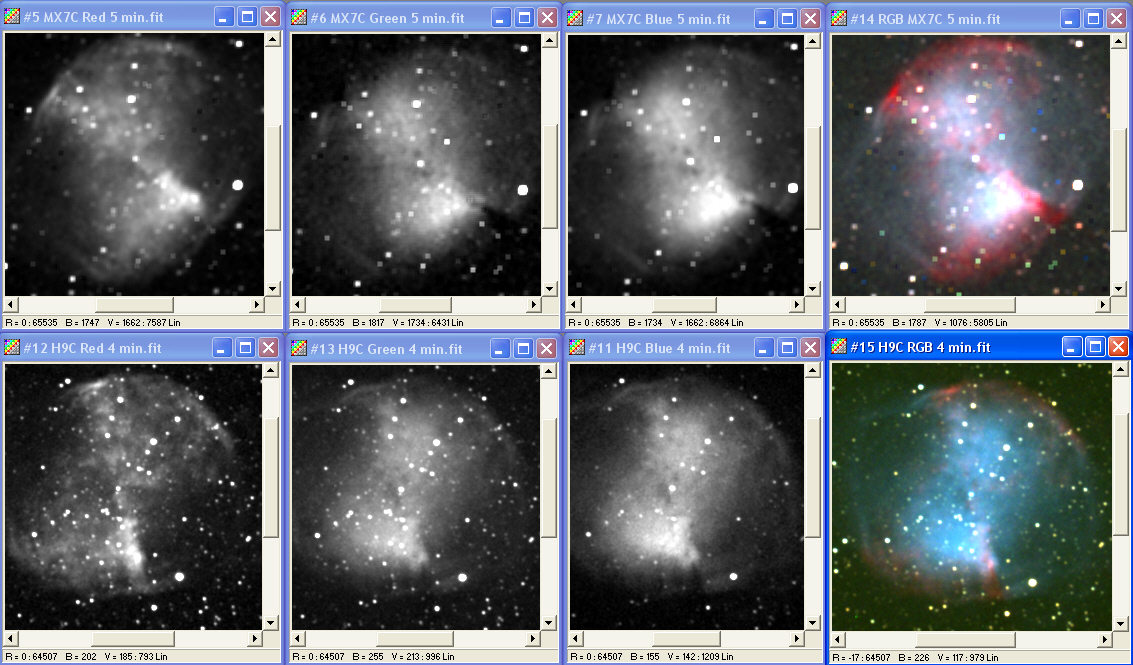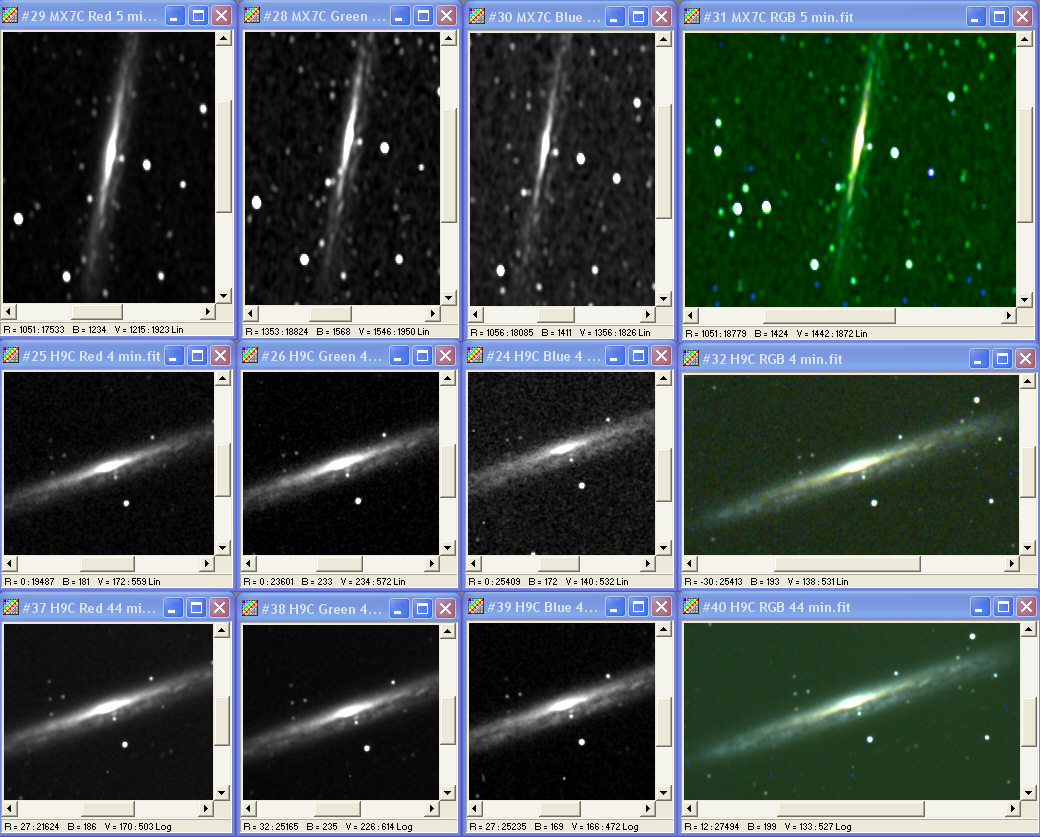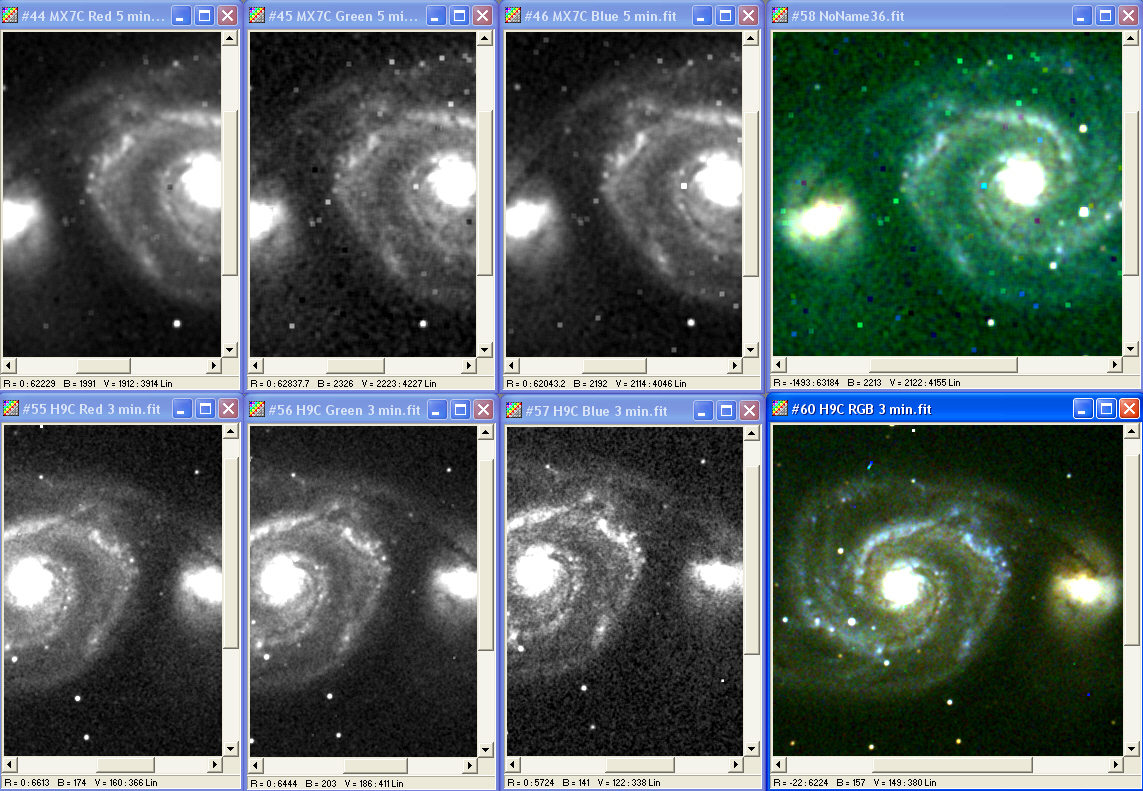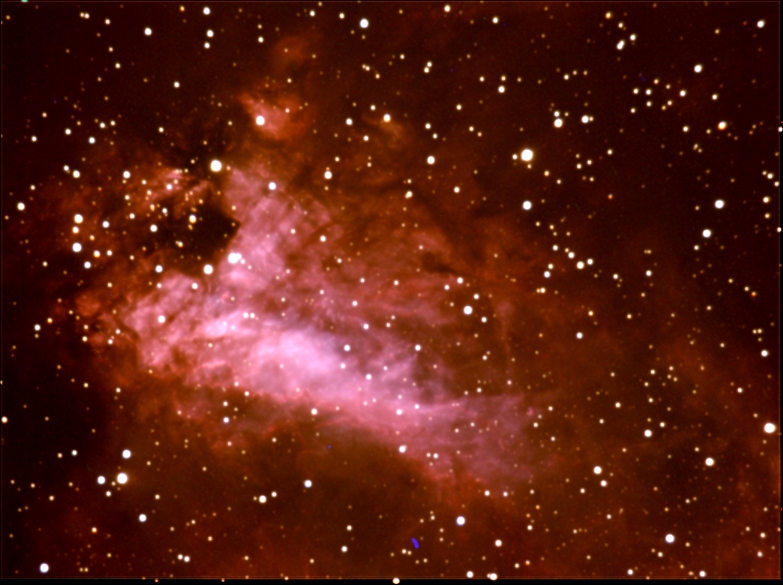
![]()
Cameras

Here are a series of images showing the differences between cameras. No additional processing was performed on the individual RGB frames, but a small amount of balance was done on the combined RGB frame. Note the superior performance of the H9C over the MX7C, despite shorter exposures. The H9C RGB image is nearly passable as a stand alone image due to the higher color frame resolutions.
M27 - Note the much improved resolutions for the H9C, particularly in the red frame. No color balancing performed on the RGB frame.
NGC5907 - For galaxies, the MX7C is typically deficient on colors, requiring long exposures. The blue frames are typically very weak with a unique blotchiness. In contrast, the H9C shows better details in the blue frame, again, with shorter exposures (no color balancing performed). The bottom set of NGC5907 shows the R, G, B and combined RGB image for a 44 minute total exposure. Very good blue signal is achieved and easily seen in the combined image.
M51 - The H9C in this example was only 3 minutes long, but exhibits excellent color delineation with only 3 minutes of exposure! The MX7C image also shows some reasonable colors, but required an extreme increase in saturation (90 in AA) to show this. No adjustment was done on the H9C RGB image.
M17 - This image shows what an RGB only image looks like at 50% size (no luminance) with some unsharp mask. Although softer than an LRGB equivalent, color transitions are excellent. A comparison to true R, G, B imaging should be performed to see how close an H9C comes.
Conclusion: The H9C has superior color synthesis over the MX7C and can demonstrate reasonable colors in short exposures! The MX7C can also produce very good final LRGB images, but on fainter subjects, requires longer exposures to achieve good color saturation (i.e. 1 hour or greater). While longer times are recommended for the H9C as well, this is mainly to reduce the noise in the fainter regions of the object.



